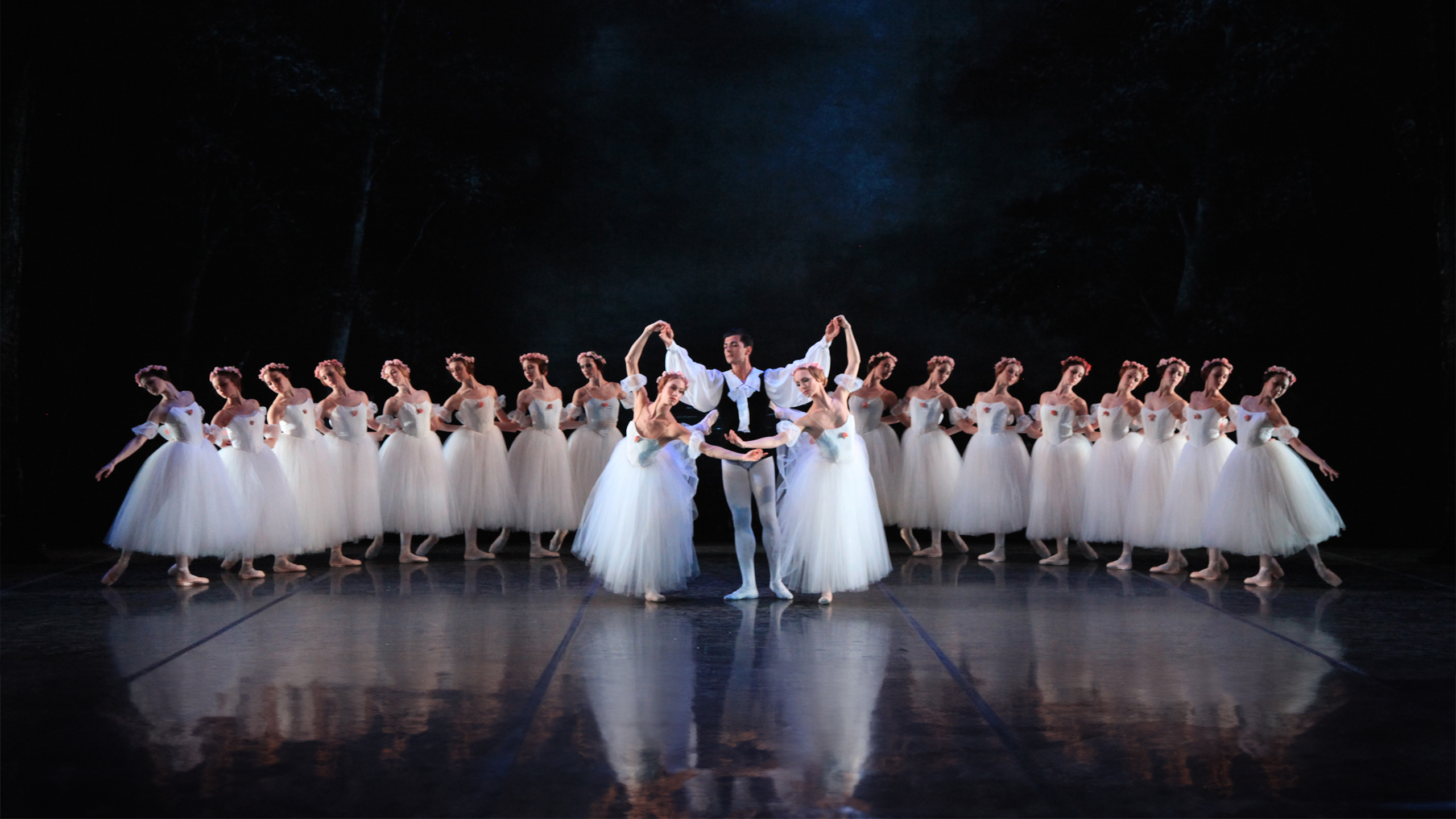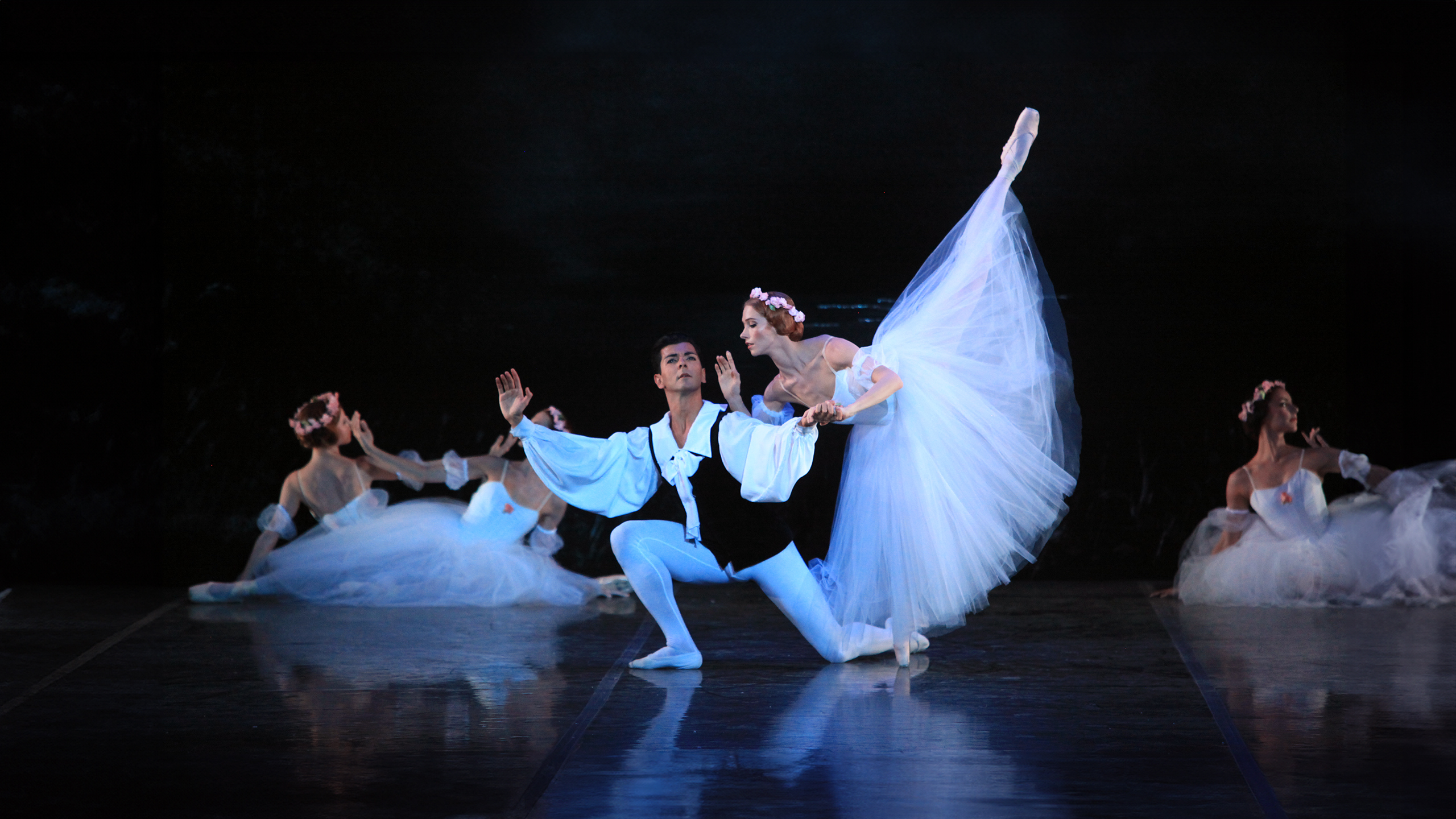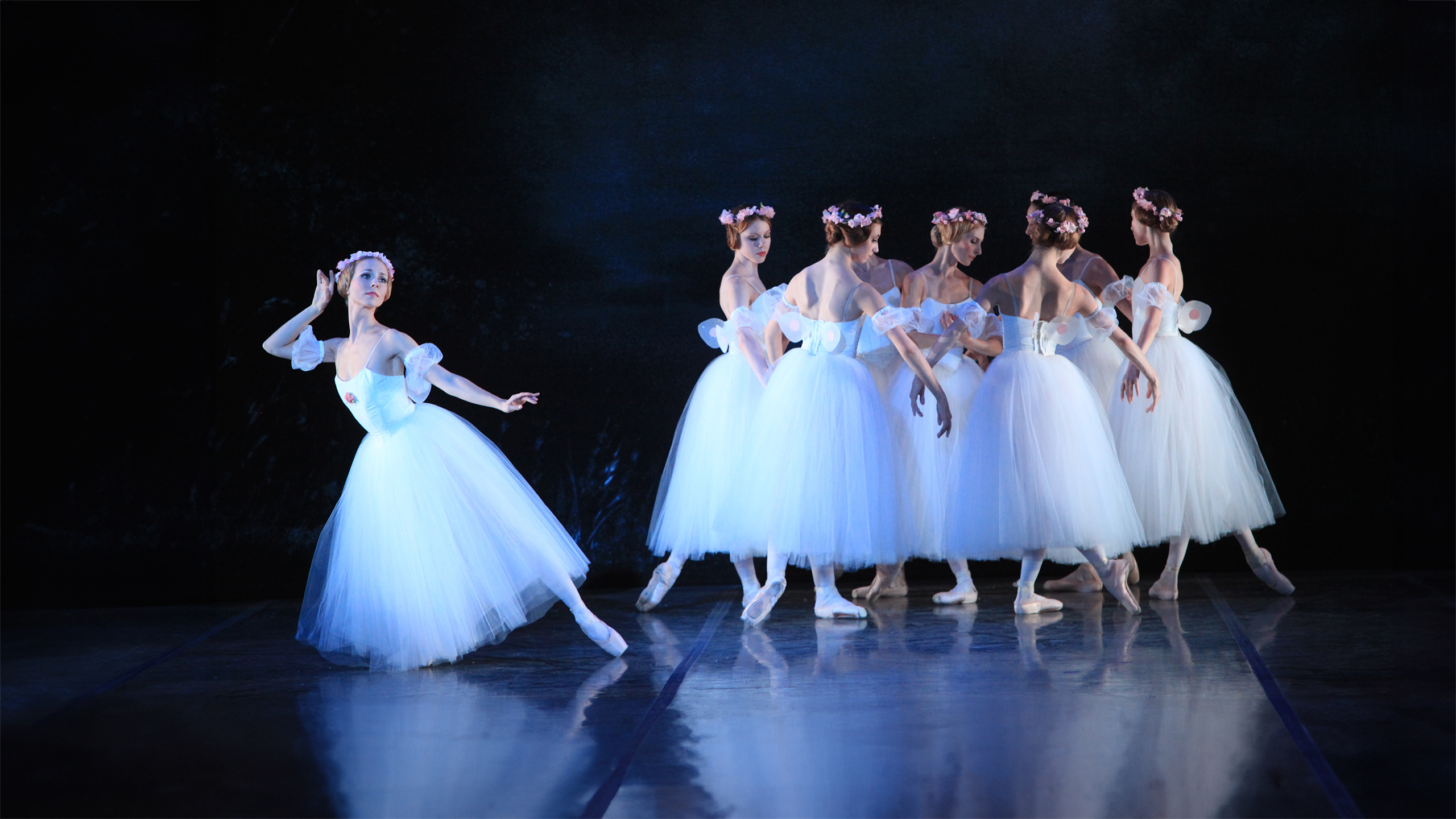Les Sylphides
Michel Fokine
Premiered March 20, 1908, by The Ballets Russes
Les Sylphides
Better known in its native Russia by its original 1908 title Chopiniana, Les Sylphides (not to be confused with the Scottish fantasy ballet La Sylphide) was a conscious homage to the mid-Nineteenth Century Romantic Ballet (typified by Giselle, Pas de Quatre, and La Sylphide) from which the great Russian tradition derived. It was also an innovative descendant of the great “white” corps de ballet acts of Lev Ivanov, exemplified by The Kingdom of the Shades scene from La Bayadere or Swan Lake Act II.
In 1909, a year after its Russian premiere, Fokine’s Chopin ballet was redesigned in the form we now know it by Alexandre Benois and presented by Diaghilev as part of his famous inaugural Paris season (2 June at Theatre du Chatelet, Paris), after which it remained in the Diaghilev repertoire, until its demise in 1929. Diaghilev always asserted that Les Sylphides was his favorite ballet, and it was considered a great honor to be cast in it.
The original Paris cast was led by Anna Pavlova, Tamara Karsavina, Alexandra Baldina, and Vaslav Nijinsky. It was a ground-breaking work.
What was so unusual about the ballet in 1908 was its plotless and abstract nature, in an era when a non-narrative ballet was a startling innovation, and this makes Les Sylphides the first and definitive “mood ballet.” Fokine described it as “the personification of a poetic vision,” which reinforces its identification with the Romantic era of the early Nineteenth Century.
Chopin’s piano compositions, deftly orchestrated by Roy Douglas, also root the ballet firmly in the Romantic era, along with Benois’ costumes: a single male dancer in the traditional black velvet of the Romantic hero (Werther or Hamlet) and an immaculately pure female corps de ballet and soloists in gauzy white tulle.


